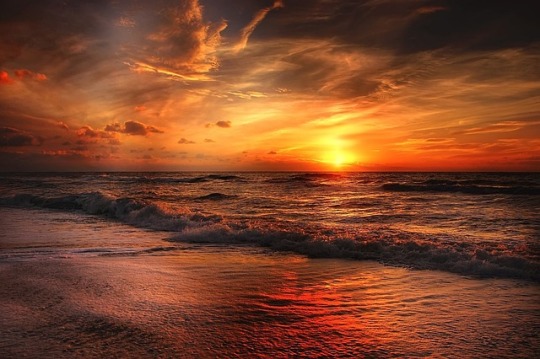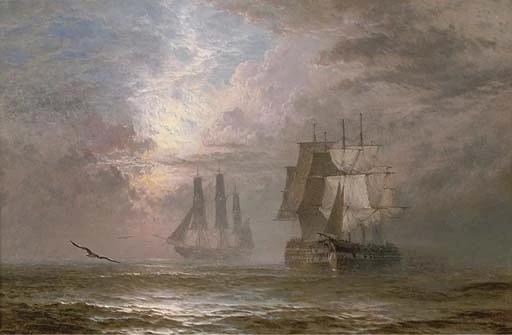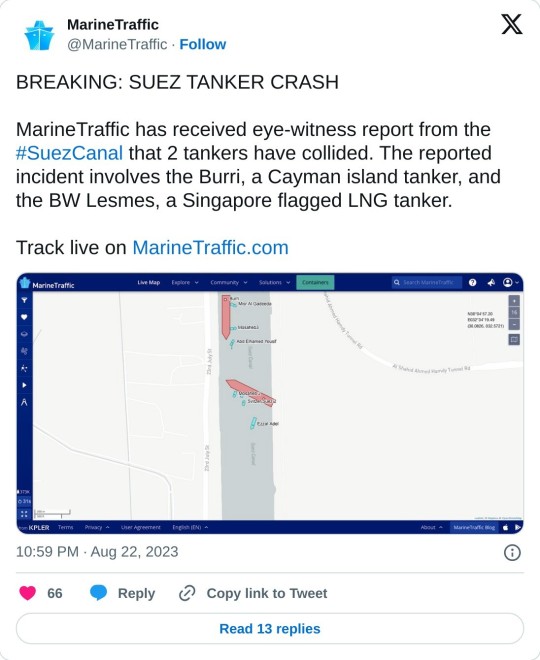#ship collision
Explore tagged Tumblr posts
Note
I know you live in Maryland. I'm sorry to hear about the FSK bridge. I heard that the ship lost power but don't they have back up steering?
Thank you. It is disaster for a lot of Maryland. In answer to your question, I don't know. I suspect that even if there is a backup there wouldn't have been time for the ship to turn.
I have two friends who have served in their countries much respected Merchant Navies. If they see this and know of the Key Bridge incident they may be able to tell you more of the technical issues of turning a ship without power. @aber-flyingtiger, @weergang
28 notes
·
View notes
Text

#Rescue ship#Ship collision#North Sea#DGzRS#Search and rescue#Shipwreck survivors#Heroic courage#Life-saving#Dramatic rescue operation#Forces of nature#Command center#Fight for survival#Rescue divers#Hope and determination#Coast guard#North Sea coast#High-stakes rescue mission#Teamwork#Shipwreck emergency#German waters#Rettungsschiff#Schiffskollision#Nordsee#Seenotrettung#Schiffbrüchige#Heldenmut#Lebensrettung#Dramatische Rettungsaktion#Naturgewalten#Einsatzleitung
0 notes
Text
হাওড়ায় এড়াল ভয়ঙ্কর দুর্ঘটনা! বাঁচতে গিয়ে বাঁধে ধাক্কা বিদেশি জাহাজের
<p><strong>সুনীত হালদার, হাওড়া:</strong> শুকনো মরসুমের সময় নদীতে জল কম থাকে। কিন্তু এখন ঘোর বর্ষা। নদীতে জলের স্রোত। তারপরেও চরার বিপদ কাটল না। নদীর চরে ধাক্কা দিয়ে আটকে গেল পণ্যবাহী জাহাজ, তার ধাক্কায় ভাঙল বাঁধও। ঘটনাটি ঘটেছে হাওড়ার গড়চুমুকে। </p> <p>হাওড়ার পরিচিত পর্যটন কেন্দ্র গড়চুমুক। সেখানেই নদীপথ দিয়ে পণ্যবাহী জাহাজ যাতায়াত করে। এদিন ওই নদীপথ দিয়েই কলকাতার দিকে যাচ্ছিল একটি…
View On WordPress
0 notes
Text
Today’s Problematic Ship is the USS Harry S. Truman


The USS Harry S. Truman is a Nimitz-class nuclear powered aircraft carrier. Late at night, local time, on February 12, 2025, near Port Said, Egypt, the northern mouth of the Suez Canal, the 332 m, 100 000 tonne warship collided with the M/V Besiktas-M. The latter is a Panama-flagged, 188.5 m, 53000 tonne bulk carrier. As of February 13, the extent of the damage to either ship is unknown, but there are so far no reports of casualties aboard.
461 notes
·
View notes
Text
“Average Starfleet starship is stolen 3 times a year” factoid actually just statistical error. The average starship is stolen 0 times. The starship Enterprise which has been stolen at least 10,000 times by its own crew during its five year mission is a statistical outlier and should not have been counted.
#yes they did just steal the fucking ship again#Starfleet needs to invent a starship anti theft device#star trek tos#star trek academy collision course#spock#jim kirk#Star Trek
736 notes
·
View notes
Text

Dec 18 / Dec 20

190 notes
·
View notes
Text
Got reminded of these guys this morning, oh how I miss my fave crackship


Comic - Multiversus: Collision Detected Issue #2
#dc#dcu#batman#batfamily#batfam#bugs bunny#multiversus#batbugs#that's their ship name i just decided#the first time Bruce removed the cowl#bugs did that thing were the eyes burst out the socket#and trumpets play in the background#and his eyes r also hearts#u know what i mean#don't make me draw it cos I will#multiversus: collision detected
88 notes
·
View notes
Text

A collision at twilight, by Henry Thomas Dawson, 1873
171 notes
·
View notes
Text
GET A ROOM ALREADY


#jack perry#all elite wrestling#scapegoat#jungle boy#daniel garcia#aew#aew dynamite#aew collision#scapegoat jack perry#my god these men are homosexual#BEEEE WHOOOO YOOUUU AAAREEE FORRR YOURRRR PRIIIIIIDE#jackdanny#is that the ship name#i like it
58 notes
·
View notes
Text

Excerpt from this story from Inside Climate News:
An estimated 90 percent of all traded goods travel by sea, where vessels tap into a vast network of shipping routes that connect even the most far-flung places.
But humans aren’t the only ones traversing vast distances across these marine highways. A new study found that shipping occurs in more than 90 percent of whale ranges, where the animals can often get hit��becoming what scientists grimly refer to as “ocean roadkill.” By combining shipping and whale distribution data, the researchers pinpointed the areas with the highest risk of whale-vessel collision for several species. They discovered just a small fraction of these hotspots have any collision protection measures in place.
“There’s just extremely high overlap of shipping traffic with whales,” said study co-author Briana Abrahms, a wildlife biologist at the University of Washington. “These whales are just having to contend with an incredibly, incredibly busy ocean, and shipping traffic is a leading cause of mortality for several whale species.”
Shipping, cruise and fishing vessels fatally strike an estimated 20,000 whales around the world each year. Scientists say this is likely an underestimate because vessels could unwittingly hit a whale whose body sinks to the seafloor before it is recorded. Climate change could be increasing vessel strike risk as ocean warming and marine heatwaves push whales closer to human activity.
There is a bright spot. Research shows that low-speed zones and shipping reroutes can help keep whales out of danger, while reducing emissions and improving air quality for people. And a little protection could go a long way: Expanding these management measures across an additional 2.6 percent of the ocean could mitigate the highest-risk collision hotspots, according to the study.
Whales are some of the most well-traveled cosmopolitans of the sea. For example, humpbacks can swim around 5,000 miles each year during their seasonal migration. Yet the exact hang-out spots or routes that different cetacean species use on their journeys are still largely a mystery.
To help change that, the researchers collated more than 435,000 whale sightings from a variety of sources, including government surveys, scientific tagging studies, whale-watching citizen scientists and even historic whaling records. They focused on four globally ranging species: fin whales, sperm whales, humpbacks and blue whales—the largest mammals on Earth.
The scientists then inputted this deluge of data into a predictive model, and created some of the first comprehensive worldwide maps for where these ocean giants spend their time.
Now, scientists can “take a really global look at where these animals are in the ocean where we haven’t really always had eyes on in the past,” Abrahms said.
39 notes
·
View notes
Text
“Do you remember when you were having some tough times and you needed a place to stay, so you slept on my couch?”
“I remember that Wheeler Yuta. The old Wheeler Yuta.”
god i love yaoi
#i’m kidding LOL i don’t ship them#also whoever in the audience yelled ‘HE’S CONFUSED’ ily LMAOOO#gabbi’s wrestling liveblog#aew#aew collision#orange cassidy#wheeler yuta
52 notes
·
View notes
Text

If this has been done before, I'm sorry but please accept this humble meme
#All Elite Wrestling#AEW#AEW Dynamite#AEW Rampage#AEW Collision#MJF#Maxwell Jacob Friedman#Adam Cole#Dr. Britt Baker#aew meme#aew memes#wrestling meme#wrestling memes#adamjf#ship: better than you baybay#tell me when i'm telling lies!#pls laugh#this took me a good 10mins#poor me /s
289 notes
·
View notes
Text
A Storm of Heroes: Battle for the North Sea
Skiper D. Schröder was a man who kept his composure even in the stormiest waters of life. As the head of the German Society for the Rescue of Shipwrecked Persons (DGzRS), he had encountered enough treacherous situations to understand that the North Sea was not merely a picturesque backdrop for idyllic coastal towns, but also a relentless and unforgiving force capable of sealing the fate of sailors in seconds.
On this fateful day, Skiper Schröder had once again assumed his duties, without realizing that he was about to face one of the most challenging trials of his life. The news of the collision between the two cargo ships, "Polesie" and "Verity," in the German Bight had reached him at the DGzRS control center, and his brow furrowed deeply as he learned the dramatic details.
Conditions out there were relentless: waves reaching up to three meters, poor visibility, and gale force six winds. Skiper Schröder knew that his crews were in a nightmare. However, he also understood that they were trained and motivated to confront any challenge. These men and women were risking their lives to save others, and that drive compelled them, even in the most adverse conditions.
"Conditions are challenging," Christian S., the DGzRS spokesperson, said as he coordinated the crews on the rescue ships. "The sea is as fierce as a beast today."
A young rescue swimmer, Max, spoke to Skiper Schröder over the radio. "Skiper, we have visual contact with a life raft. There are survivors on it, struggling through the waves."
Skiper responded, "Hold on, Max. We're almost there. You are our hope."
The search for the shipwrecked had begun, and Skiper Schröder could sense the tension in the air. Rescue ships and helicopters combed the sea, while the sonar plane searched for signs of the missing seafarers. The crews on the life-saving ships were in constant communication, coordinating their efforts and keeping hope alive.
"We must find these men, Skiper," Petra, an experienced sea rescuer, said with a trembling tone in her voice. "We cannot fail."
Skiper placed a reassuring hand on her shoulder and calmly stated, "We will find them, Petra. Do not give up."
Meanwhile, divers prepared to explore the sunken ship "Verity" in the depth of 30 meters. The chance that the missing crew members were trapped inside the ship's hull existed, but the conditions were exceedingly challenging. The frigid water temperature turned the rescue operation into a race against time.
"Divers, you are our last hope," Skiper Schröder declared to the men as they prepared for their perilous mission. "Bring our seafarers back safely."
The sun had long set, and a relieved call came over the radio. "Skiper, we've found them! They are alive!"
Skiper Schröder could hear the joy in the diver's voice, and a smile spread across his face. "Well done, men. You are heroes."
Ultimately, the missing seafarers inside the sunken cargo ship "Verity" were also located and rescued. They had been trapped in a small airshaft, waiting for a miracle. Their survival appeared to defy all odds.
When they were finally saved, relief was evident in their eyes. One of them, an older seafarer named Karl, with tears in his eyes, said, "You've saved our lives; I'll never forget you."
The sunrise the next morning marked the end of this dramatic rescue mission. The DGzRS crews had triumphed over the merciless North Sea and the forces of nature. Skiper D. Schröder could take pride in his team and their dedication.
The tragic collision of the cargo ships had transformed into a story of heroes. The rescue teams had turned the impossible into reality, and the missing seafarers had been saved. This was a triumph of human will over the forces of nature, a tale of courage, determination, and teamwork that would be etched into the annals of the DGzRS. Skiper D. Schröder knew that they were ready to confront any new challenge that the unforgiving sea might throw their way.
#Rescue ship#Ship collision#North Sea#DGzRS#Search and rescue#Shipwreck survivors#Heroic courage#Life-saving#Dramatic rescue operation#Forces of nature#Command center#Fight for survival#Rescue divers#Hope and determination#Coast guard#North Sea coast#High-stakes rescue mission#Teamwork#Shipwreck emergency#German waters
0 notes
Text
Today's problematic ships are the Burri and the BW Lesmes
The Burri and the BW Lesmes are an oil tanker and a liquified natural gas tanker, respectively. About 25 minutes ago as of writing this, around 0200 local time on August 23, 2023, they collided in the Suez canal.

#i warned you about canals bro#i told you dog#it keeps happening#boat stuck… five!#problematic ships#oil tanker#lng tanker#collision#suez canal
381 notes
·
View notes
Text

we’re a disaster waiting to happen.
oh, my fragile percico heart—
#their collision being as catastrophic and as inevitable of those of earthquakes#best ship <3 fave ship#percico#nico di angelo#percy jackson#pjo
131 notes
·
View notes
